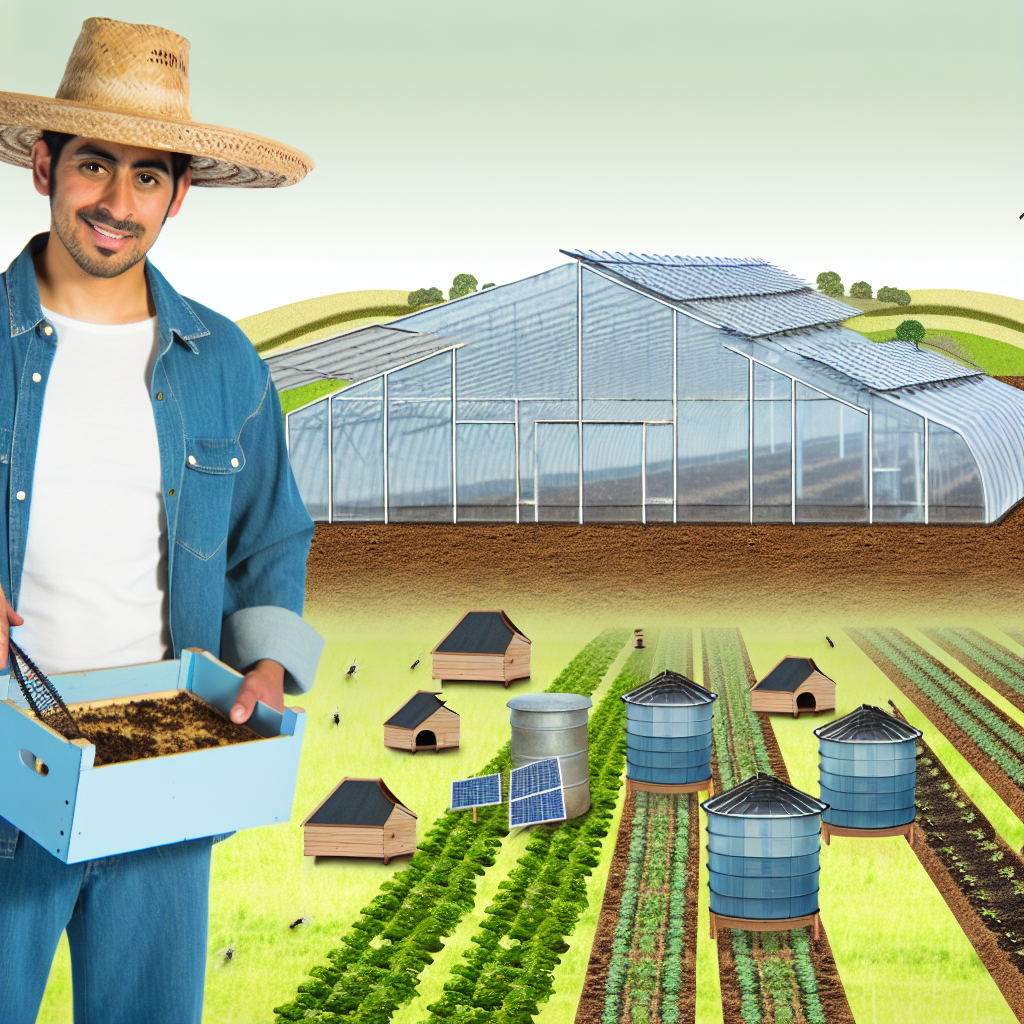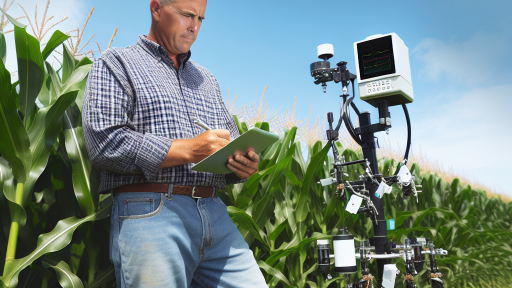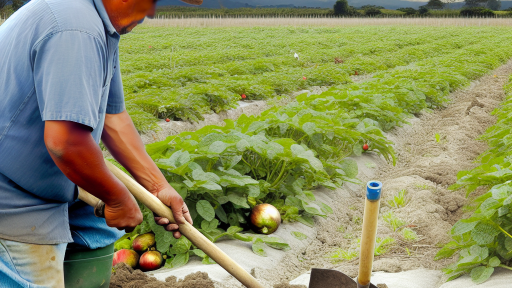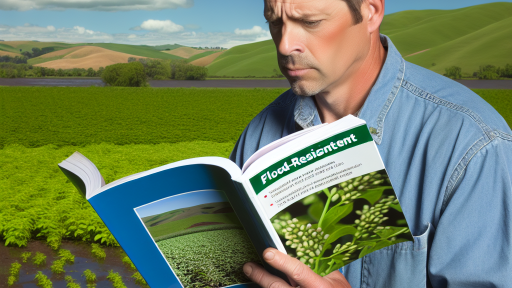Introduction to Sustainable Farming in the Context of Climate Variability
Understanding Climate Variability
Climate variability significantly affects agricultural practices worldwide.
Changes in temperature and precipitation patterns create challenges for farmers.
Sustainable farming adapts to these fluctuations effectively.
Defining Sustainable Farming
Sustainable farming focuses on using resources wisely.
This approach emphasizes environmental health and economic viability.
Farmers engage in practices that safeguard natural systems.
Importance of Adaptation
Adaptation is crucial in sustainable farming techniques.
Farmers must anticipate climate challenges and respond proactively.
Developing resilience enables farms to thrive amid unpredictability.
Innovative Practices for Climate Resilience
Utilizing crop rotation enhances soil fertility and reduces pests.
Cover crops help manage soil erosion and retain moisture.
Additionally, agroforestry systems integrate trees into farming, promoting biodiversity.
Community Collaboration and Knowledge Sharing
Farmers benefit from sharing strategies within their communities.
Participating in workshops fosters innovation and best practices.
Collaborative efforts enhance resilience against climate extremes.
Transform Your Agribusiness
Unlock your farm's potential with expert advice tailored to your needs. Get actionable steps that drive real results.
Get StartedUnderstanding Weather Patterns
Analyzing Historical Data
Farmers have traditionally relied on historical weather data.
This data reveals patterns and trends over the years.
Understanding these patterns can aid in decision-making.
Patterns include seasonal changes and common weather events.
For instance, farmers note recurring droughts or floods.
Such information helps in preparing for possible outcomes.
Utilizing Weather Forecasting Techniques
Modern technology provides advanced weather forecasting methods.
Farmers can access reliable predictions through various platforms.
These predictions allow for informed planning and action.
For example, a forecast of heavy rain may prompt early harvesting.
Consequently, timely decisions can mitigate crop losses.
Future Weather Predictions
Anticipating future weather changes is crucial for sustainable farming.
Climate models indicate shifts in temperature and precipitation patterns.
Farmers must adapt to these changes to maintain productivity.
Innovative practices can help cope with increased weather variability.
Engaging with scientific research enhances understanding of future trends.
The Importance of Local Weather Patterns
Local weather patterns significantly influence farming practices.
Farmers should observe regional and microclimatic conditions.
This localized knowledge helps in making tailored decisions.
For instance, wind and humidity can impact crop growth.
Additionally, soil conditions may vary greatly even nearby.
Integration of Technology in Farming
Farmers increasingly adopt technology to track weather changes.
Smart sensors and IoT devices provide real-time data.
This integration allows for responsive actions to weather fluctuations.
Showcase Your Farming Business
Publish your professional farming services profile on our blog for a one-time fee of $200 and reach a dedicated audience of farmers and agribusiness owners.
Publish Your ProfileMoreover, technology can automate irrigation based on moisture levels.
Such innovations enhance efficiency and reduce waste.
Soil Health Management
Understanding Soil Health
Soil health refers to the condition of soil within an ecosystem.
Healthy soil supports plant growth and environmental sustainability.
Moreover, it influences water retention and nutrient cycling.
Organic Practices to Enhance Resilience
Organic farming techniques significantly improve soil health.
Crop rotation promotes diversity and minimizes pest outbreaks.
Cover crops prevent soil erosion and enhance organic matter.
Including legumes in rotations fixes nitrogen in the soil.
Composting
Composting enriches soil with organic material and nutrients.
This process helps retain moisture and improve soil structure.
Furthermore, it encourages beneficial microbial activity.
Reduced Tillage
Reduced tillage minimizes soil disturbance and compaction.
This practice enhances soil structure and moisture retention.
Additionally, it promotes the proliferation of soil organisms.
Integration of Livestock
Integrating livestock into farming enhances nutrient cycling.
Manure from animals supplies essential nutrients to crops.
Furthermore, rotational grazing improves soil health and biodiversity.
Monitoring Soil Health
Regular testing of soil is crucial for effective management.
This practice identifies nutrient deficiencies and pH levels.
Adjusting inputs based on these tests promotes sustainable practices.
Utilizing Soil Amendments
Soil amendments can enhance fertility and structure.
Organic matter additions, like compost, can boost soil life.
Furthermore, they improve the soil’s ability to hold water.
Uncover the Details: Farmers’ Toolkit for Climate Adaptation Success
Water Conservation Techniques
Drip Irrigation
Drip irrigation delivers water directly to the plant roots.
This method reduces water waste significantly.
Farmers can enhance crop yields while conserving water.
Additionally, it minimizes weed growth.
Investing in drip irrigation systems often yields long-term benefits.
These systems can be automated for efficiency.
Moreover, they allow for precise control over water application.
Farmers should consider local climate conditions when implementing this system.
Education on proper installation is essential for success.
Many farmers report increased productivity after switching to drip irrigation.
Rainwater Harvesting
Rainwater harvesting captures and stores rainwater for irrigation.
This method is sustainable and cost-effective.
Farmers can install tanks or cisterns to collect rainwater.
Using this technique can reduce reliance on groundwater.
Furthermore, it helps mitigate stormwater runoff.
Showcase Your Farming Business
Publish your professional farming services profile on our blog for a one-time fee of $200 and reach a dedicated audience of farmers and agribusiness owners.
Publish Your ProfileImplementing rain gardens can enhance water infiltration.
Creating a network of gutters and downspouts aids collection.
Farmers should assess the area for maximum rainfall capture.
Regular maintenance of collection systems is crucial.
Education on rainwater use increases efficiency and sustainability.
Gain More Insights: Economic Strategies for Climate-Resilient Agricultural Practices
Crop Diversification: Planting Strategies for Unpredictable Conditions
Understanding Crop Diversification
Crop diversification involves growing a variety of crops in a specified area.
This practice enhances resilience against pests and diseases.
Moreover, it mitigates the risks posed by unpredictable weather patterns.
Farmers like Sarah Jensen have benefitted from diversifying their crops.
They have seen improved yields and reduced losses during adverse conditions.
Benefits of Crop Diversification
Diversification provides numerous environmental benefits.
It helps build healthier soils by reducing soil erosion.
Additionally, it promotes biodiversity which supports ecosystem sustainability.
Different crops require varied nutrients, leading to more balanced soil health.
Effective Planting Strategies
Implementing diverse planting strategies can boost crop performance.
One effective method is intercropping, which involves planting different crops in close proximity.
This approach can optimize the use of space and resources.
For instance, pairing nitrogen-fixing legumes with cereals enhances growth.
Utilizing Seasonal Variation
Understanding seasonal variations is crucial for successful crop diversification.
Farmers should select crop varieties suited to their local climate.
For example, rotating cool and warm season crops maximizes productivity.
Such rotations can minimize pest cycles and improve soil health.
Technology and Data Utilization
Utilizing technology can support diversified farming practices.
Tools like precision agriculture help farmers monitor and optimize their crops.
Data analysis enables informed decision-making regarding planting schedules.
Farmers like Oliver Banks employ sensors to track soil moisture and nutrients.
Community and Knowledge Sharing
Engaging with local farming communities fosters knowledge sharing.
Farmers can learn from one another’s experiences with crop diversification.
Workshops and seminars contribute valuable insights into best practices.
Collaboration often leads to innovative strategies for dealing with unpredictable weather.
Discover More: Adaptation Strategies for Farmers in Changing Climates

Use of Technology: Climate-Smart Agriculture Tools and Apps
Introduction to Climate-Smart Agriculture
Climate-smart agriculture includes innovative methods to adapt to changing conditions.
This approach integrates various technologies to optimize resources.
Farmers utilize these technologies to enhance productivity and sustainability.
Precision Agriculture Tools
Precision agriculture employs data and analytics to improve farming efficiency.
Farmers can monitor soil moisture using sensor technologies.
These sensors help in making informed decisions about irrigation.
Drones play a crucial role in crop surveillance and monitoring health.
Using satellite imagery provides valuable insights into crop conditions.
Showcase Your Farming Business
Publish your professional farming services profile on our blog for a one-time fee of $200 and reach a dedicated audience of farmers and agribusiness owners.
Publish Your ProfileMobile Applications for Farmers
Mobile applications offer farmers immediate access to weather forecasts.
These apps provide critical information on pest management and crop health.
Farmers can connect with experts through platforms like AgriChat.
Additionally, many apps assist in tracking farming expenses effectively.
Data Management and Analytics
Data management platforms enable farmers to analyze their yield patterns.
These systems help optimize planting schedules based on forecasts.
Farmers can access historical data to improve future decisions.
Analytics tools also help in assessing the effectiveness of irrigation strategies.
Challenges and Solutions
Despite the benefits, technology adoption may face challenges.
Many rural areas struggle with internet access for real-time data.
Organizations like GreenTech provide solutions for connectivity issues.
Training programs are essential to teach farmers how to utilize new tools.
Future Prospects
As climate change progresses, technology’s role in farming will expand.
Innovative tools will become essential in mitigating climate impacts.
Farmers who embrace these advancements will likely thrive.
Overall, technology integration is vital for sustainable farming practices.
Gain More Insights: Innovative Water Recycling Methods in Agriculture
Integrated Pest Management Strategies in Uncertain Weather
Introduction to Integrated Pest Management
Integrated Pest Management (IPM) combines multiple practices to control pests effectively.
This approach aligns with sustainable farming principles.
Farmers use IPM to minimize chemical inputs and enhance crop resilience.
Adaptability is crucial, particularly with unpredictable weather patterns.
Understanding the Components of IPM
IPM relies on various strategies to manage pests sustainably.
Monitoring pest populations is the first step in this process.
Farmers assess pest levels and their potential impact on crops.
They then decide on the best management practices.
Biological Control Methods
Biological control leverages natural predators to reduce pest populations.
For instance, ladybugs can effectively control aphids.
This method reduces the need for chemical pesticides.
Moreover, it encourages a healthier ecosystem.
Cultural Control Techniques
Cultural practices involve modifying farming methods to deter pests.
Crop rotation disrupts pest life cycles and enhances soil health.
Additionally, selecting pest-resistant crop varieties improves resilience.
Farmers can also use proper planting timing to avoid peak pest seasons.
Utilizing Weather Data in IPM
Weather data plays a crucial role in effective pest management.
Farmers can predict pest outbreaks by analyzing climate patterns.
For example, increased humidity may lead to fungal diseases.
Utilizing weather forecasts assists farmers in timely decision-making.
Collaboration and Education in IPM
Farmers benefit from collaborating with agricultural experts.
Workshops and training sessions provide valuable IPM techniques.
Networking with local agricultural agencies improves pest management strategies.
Showcase Your Farming Business
Publish your professional farming services profile on our blog for a one-time fee of $200 and reach a dedicated audience of farmers and agribusiness owners.
Publish Your ProfileContinual education helps farmers adapt to changing conditions.
Monitoring and Evaluation of IPM Success
Regular monitoring is essential for evaluating the effectiveness of IPM practices.
Farmers should maintain records of pest populations and control efforts.
This data enables continuous improvement of their management strategies.
Adjustments can enhance the overall success of pest control efforts.
Community Collaboration
Importance of Collective Efforts
Community collaboration enhances resilience against unpredictable weather.
Working together fosters shared knowledge among farmers.
Collective action enables efficient resource sharing.
This unity helps tackle challenges more effectively.
Building Local Networks
Establishing local networks connects nearby farmers.
These networks can facilitate knowledge exchange.
They often host workshops and training sessions.
Farmers can share experiences and best practices.
Creating Support Groups
Support groups provide emotional and practical assistance.
Farmers can discuss their challenges without judgment.
Mentorship programs can also be organized.
Experienced farmers can guide newcomers.
Shared Resources and Equipment
Pooling resources can reduce individual costs significantly.
Farmers might share machinery for planting and harvesting.
This cooperation allows more efficient use of tools.
It also promotes sustainability by minimizing duplication.
Community Tool Libraries
Tool libraries can provide access to specialized equipment.
These libraries reduce the financial burden on farmers.
Farmers can borrow tools as needed without buying them.
Knowledge Exchange Initiatives
Farmers can initiate programs for skill sharing.
For example, cooking and canning workshops can be organized.
Online platforms also facilitate knowledge exchange.
Farmers can share weather patterns and crop management tips.
Research Collaborations
Collaborating with local universities promotes research.
This partnership can lead to better crop varieties.
Furthermore, it can provide insights on climate-adaptive practices.
Community Resilience Projects
Creating community gardens can enhance food sovereignty.
These gardens serve as educational tools for sustainable practices.
Moreover, they build stronger community bonds.
Such projects actively involve local members in farming efforts.




